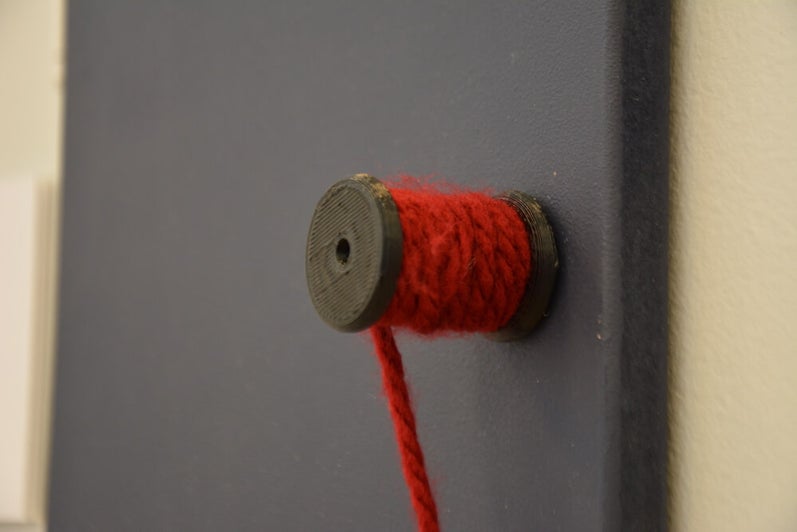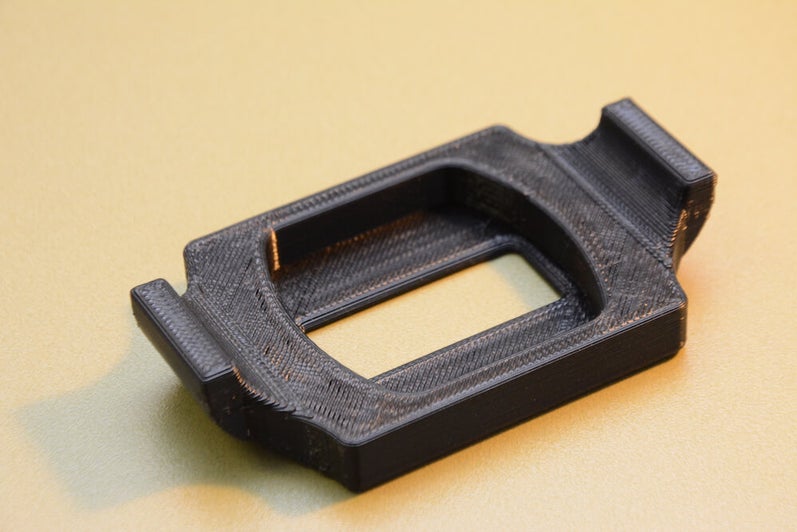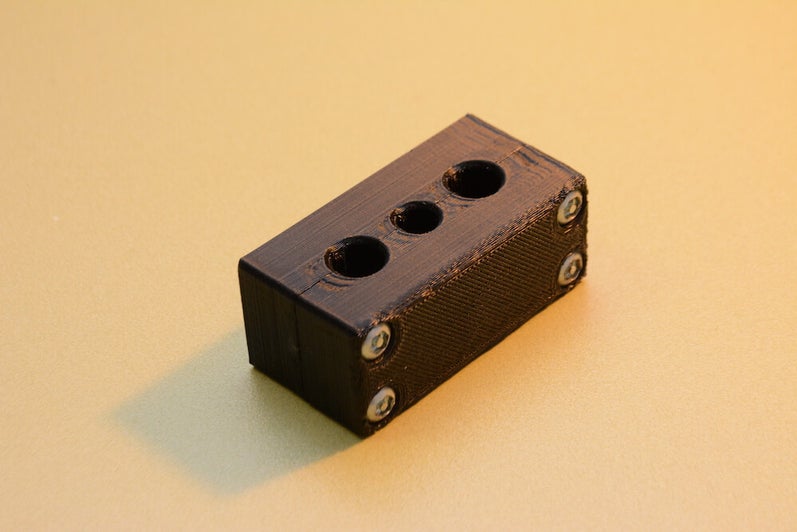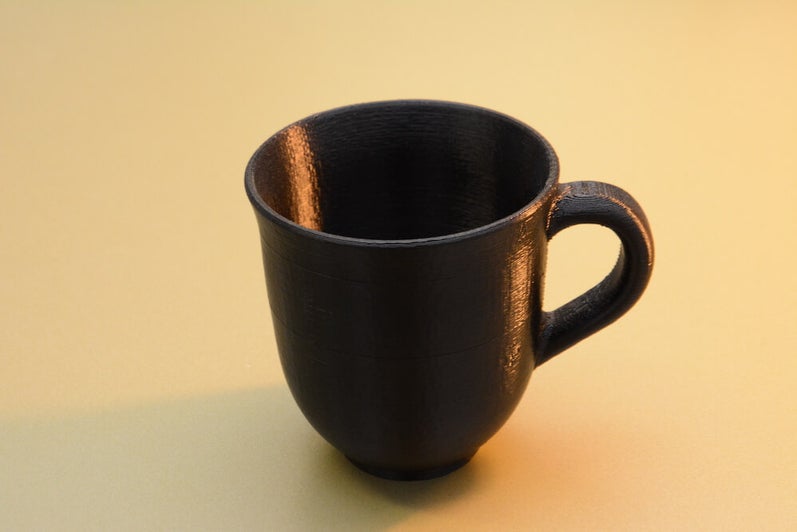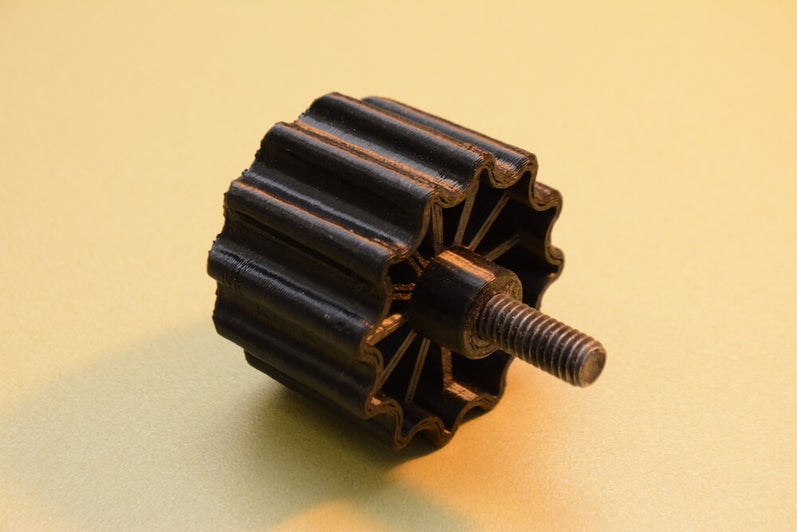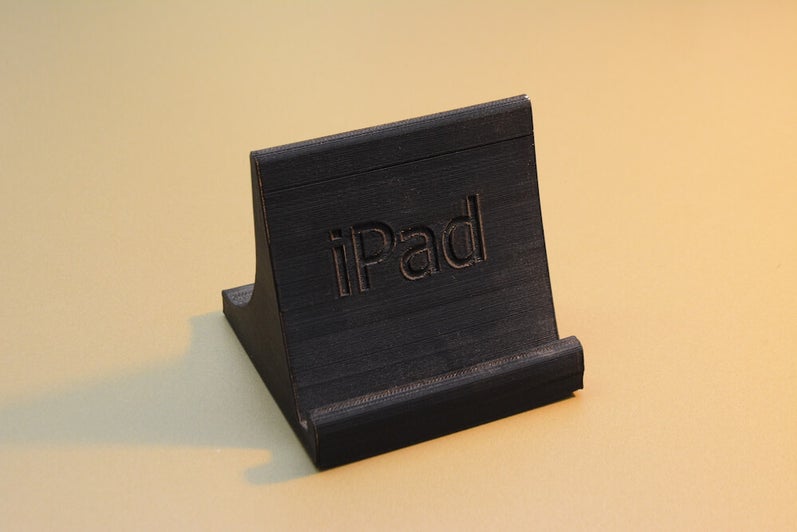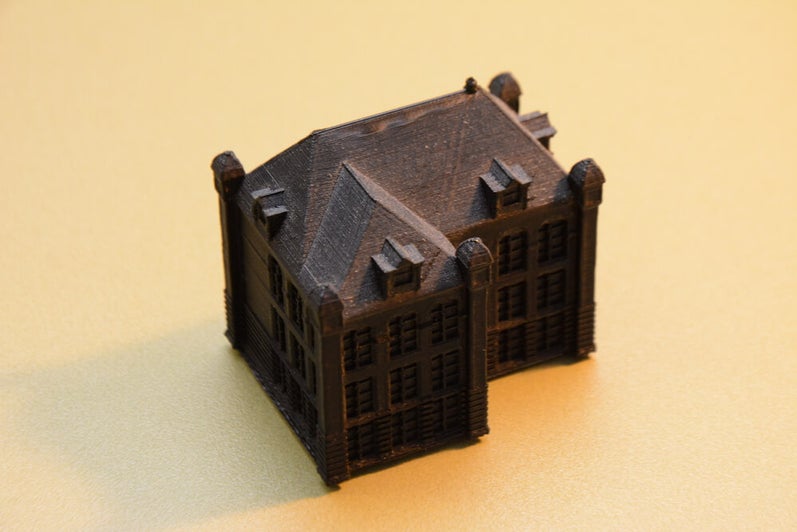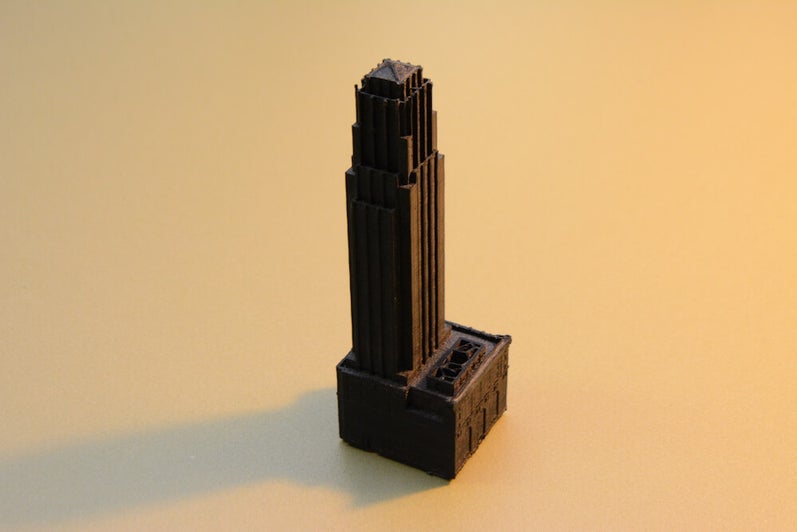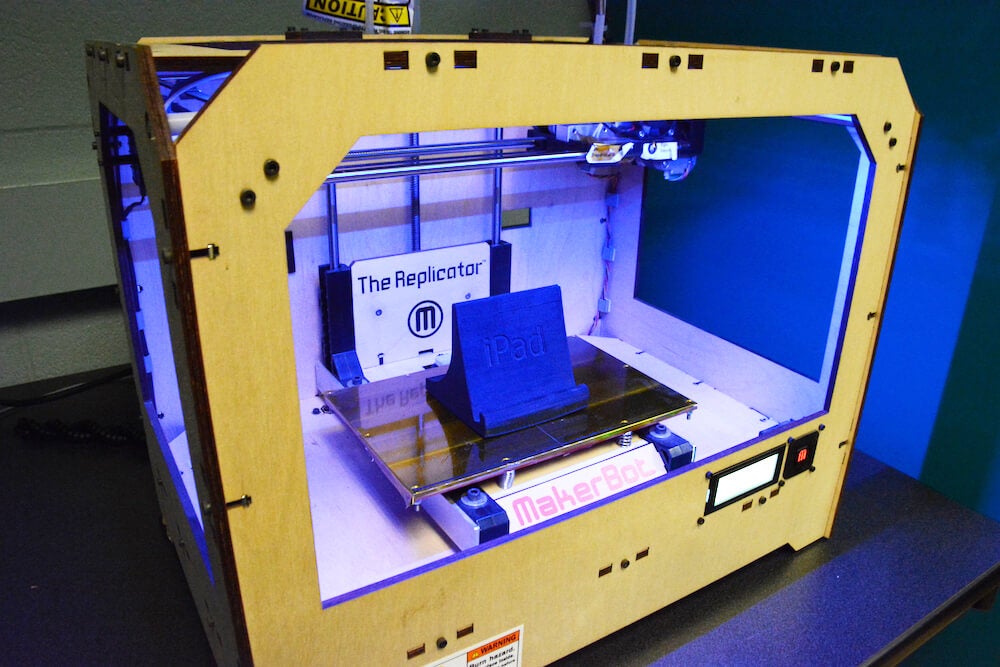
Description and uses
The 3D printer, MakerBot's Replicator (Original), is used to support academic and research activities at the Faculty of Environment. It has a work area of 225x145x150 mm with a total build volume of approximately 5 L. The build speed is 40 mm/s, and there are three preset resolutions:
- Low: 300 microns (0.30 mm)
- Standard: 200 microns (0.20 mm)
- High: 100 microns (0.10 mm)
It uses a 3 mm in diameter acrylonitrile butadiene styrene (ABS) or polylactic acid (PLA) filament. We currently have one spool of black ABS plastic filament available.
3D printer is an additive layer manufacturing technology; specifically, fused deposition modeling (FDM). As the print head moves, the ABS filament feeds through the heated extruder and deposits on the platform in the desired shape for the layer. When the print for one layer is complete, the platform will lower slightly (depending on the resolution) to the next layer and starts printing on the new layer. This process repeats until the model is complete.
MakerBot Desktop software is used to run the 3D printer. Designs are usually in STereoLithography (.stl) file type and created using 3D computer-aided design (CAD) software, such as Autodesk 123D, Inventor, and SketchUp. See examples of 3D designs on Thingiverse or consult Dan Beaver (Workshop Coordinator) about the capabilities and constraints of the 3D printer.
Further considerations
- Prior to using the 3D printer, locate the nearest fire extinguisher in case it is needed in an emergency.
- An operator must be present by the 3D printer and monitoring it at all times due to fire risk.
- Before printing the final model, it is best practice to print a test model with a very low infill percentage and a highly-efficient infill structure like the diamond to ensure the specifications are met.
- If the estimated build time is too long and the structural integrity is not of concern, then reduce the infill percentage and use the diamond infill structure to decrease the build material and time.
